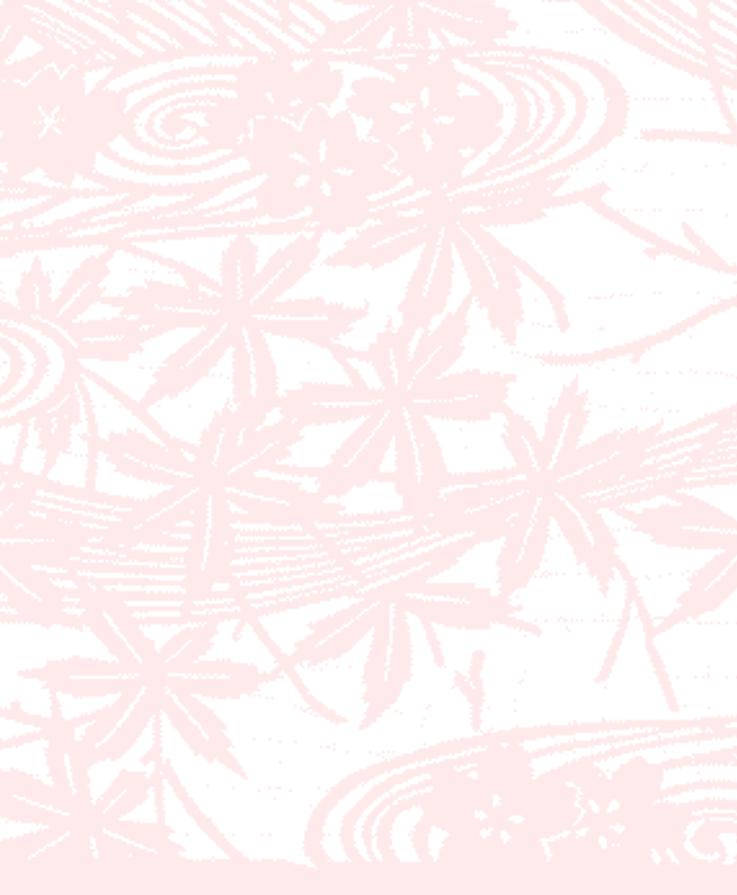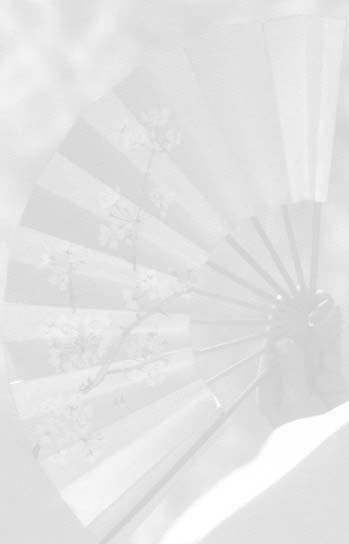MADAMA BUTTERFLY
A TEACHER’S GUIDE

INTRODUCTION
HOWTOUSETHIS GUIDE
Opera offers a unique teaching opportunity – to explore music through many different disciplines from literature and drama to history and art. This guide and accompanying CDs prepare students for the Opera Look-In and can also be used as stand-alone classroom activities and resources for teachers. For applicable National Standards, please contact Washington National Opera at 202.448.3462 or at education@dcopera.org.
Your students received a student guide to help them prepare for the Opera Look-In. The student guide provides musical and historical information about Madama Butterfly. Additionally, there are questions incorporated into the student guide which challenges your students to think critically in each section. These questions can lead to in-class discussions or provide topics for classroom assignments.
WHATYOUWILLSEE?
Based on a story by Giuseppe Giacosa and Luigi Illica with music by Giacomo Puccini, Madama Butterfly takes center stage for the 2006 Opera Look-In. You and your students will experience demonstrations of musical and technical special effects, as well as a performance of scenes with full staging, costumes, and orchestra. The performance will be sung in Italian with English supertitles projected above the stage. The estimated running time for the Opera Look-In: Madama Butterfly is 50 minutes with no intermission.
LESSON STARTERS : MATHEMATICS
In modern Japan, you can find examples of both traditional and contemporary Japanese architecture. Progressive skyscrapers stand tall next to centuries-old traditional homes.
LESSON STARTERS : HISTORY
Your students will explore early 20thcentury Japan with this production of Madama Butterfly. This period of Japanese history is known as the Meiji Restoration (1868 - 1912). The Emperor was restored as the symbolic leader, and Japan open its doors to Western trade and commerce for the first time in more than a century. The Meiji Restoration provides an excellent opportunity for your students to develop their research, writing, and technology skills.

EXPLORE MORE MATH!

EXPLORE MORE HISTORY!
Have your students research the Meiji Restoration by exploring new technologies, culture, and ideas that shaped Japanese society in the early 20th century. Students can also research Japanese influences that are incorporated into American society today. This assignment allows students to explore cultural connections to the past, present, and future.
Have your students research traditional homes during the Meiji Restoration and the architecture of modern Japan. Your students should look for repeated patterns and geometric shapes in the construction of the buildings. What are the similarities and differences with the architectural styles?
LESSON STARTERS : LANGUAGE ARTS
For centuries, Western composers have introduced elements of non-European music into their compositions. This practice dates from the 1700s with Mozart and Beethoven who were both greatly influenced by Turkish culture. Puccini, who was Italian by birth, also chose to write about cultures that were foreign to him in three of his operas: Madama Butterfly, Turandot, and The Girl of the Golden West. Puccini's decision to look outside his own country for inspiration was largely a reflection of the trend in Western Europe. Europeans in the 19thcentury were learning more about Asian and American culture than ever before through monumental events such as the World's Fair in Chicago and through easier transportation. Playwrights and composers wanted to include these new influences in their work, not only to appeal to their audiences, but also because of their own fascination with the musical dif-
composing Madama Butterfly and Turandot, Puccini listened to a large number of recordings of traditional Japanese and Chinese folk music and incorporated certain elements into his own compositions.
In many operas, performers might sing a role that is often of a different race or ethnicity than their own. This type of casting is called “color-blind” or “blind casting” where singers are cast according to a specific voice type that best suits the character. For example, the famed Greek opera singer, Maria Callas, and the great African-American opera singer Leontyne Price both performed the title role of Madama Butterfly with some of the most well known opera companies throughout the world.
Operas also cast performers in what is known as trouser/pant roles — where women will perform a character that is the opposite gender of their own. Even though this form of casting is
LESSON STARTERS : MUSIC
In many cultures, folk music allows people to convey their feelings, describe working conditions, or share a story. Even today, Japanese school children continue to learn about their culture through folk music. There are numerous instruments that are used to play traditional folk music, including the samisen and shakuhachi.
Samisen (sam-i-sen) The samisen is a long three-stringed instrument similar to the length of a guitar. The musician plays the samisen with a plectrum or pick called a bachi. When plucked, the samisen creates a buzzing sound known as a sawari. The samisen can be played solo or with an ensemble of other samisens, traditional instruments, or accompanied by singing.
EXPLORE MORE L ANGUAGE ARTS!
With your students discuss the following questions:
Why did Puccini set many of his operas in foreign countries?
Does this lead to an accurate portrayal of different cultures?
What are the positive and challenging aspects of writing about a different culture?
With your students, have an open discussion about blind casting.
What are some of the positive and challenging aspects of blind casting?

Shakuhachi
(sha-ku-ha-chi )
The shakuhachi is an end blown flute, usually made from bamboo and held vertically similar to a recorder. Shakuhachi musicians blow across the instrument, similar to


blowing across an empty bottle, but the end of the shakuhachi has a sharp edge that slightly bends which allows the musician to control the pitch. There are five finger holes drilled into the shakuhachi and the musicians can partially cover the holes or control the blowing angle to the vary the pitch and sound.
When visiting Japan today, you can hear both instruments in performances of traditional Japanese theater called kabuki. The shakuhachi and samisen continue to have a strong presence with Japanese culture as the next generation begins to use these instruments in folk music, jazz, and other modern pieces.

LESSON STARTERS : VISUAL ARTS

At the turn of the 20th-century, Western Europe became fascinated with the art and culture of Japan. During the Meiji Restoration, Japan once again opened its borders to the West and the exchange of culture and ideas flourished. Artwork from Japan inspired musicians and artists alike in Western Europe and the United States. Painters such as Henri Toulouse-

Lautrec, Vincent Van Gogh, and Mary Cassatt were inspired by the ukiyo-e, traditional woodblock prints, which later influenced their own artwork. This artistic influence is known as Japonisme.

EXPLORE MORE ART!
Have your students compare Japanese ukiyo-e prints with the work of Impressionist and Post Impressionist artists such as Toulouse-Lautrec's Moulin Rouge: La Goulue and The Irises by Vincent Van Gogh. If you are unable to visit your local museum, you and your students can research art museum collections online. Visit the Metropolitan Museum of Art at www.met.org, Art Institute of Chicago at www.artic.edu, or the National Gallery of Art at www.nga.gov for these artistic styles.

EXPLORE MORE MUSIC!
The samisen and shakuhachi, were popular traditional Japanese instruments that strongly influenced folk music.
As your students learn the story and music of Madama Butterfly, also play music selections of traditional Japanese folk melodies.
Ask your students if Puccini incorporated some these musical elements into Madama Butterfly.
EDUCATIONAND COMMUNITY PROGRAMS
AREMADEPOSSIBLEBY
THEGENEROUSSUPPORTOFTHESEFUNDERS:
$50,000 and above
Mr. and Mrs. John Pohanka

$25,000 and above
The Bank of America Charitable Foundation
Prince Charitable Trusts
$10,000 and above
DC Commission on the Arts and Humanities and the National Endowment for the Arts
Clark-Winchcole Foundation
Mr. and Mrs. Ken Feinberg
Jacob & Charlotte Lehrman Foundation
Philip L. Graham Fund
The Washington Post Company
$5,000 and above
The Honorable Max N. Berry and Mrs. Berry
Mr. and Mrs. Melvin S. Cohen
International Humanities
Mr. and Mrs. Eugene Rotberg
$2,500 and above
Mr. Walter Arnheim
The Max and Victoria Dreyfus Foundation Target
The K.P. and Phoebe Tsolainos Foundation
$1,000 and above
Justice Ruth Bader Ginsburg and Professor Martin Ginsburg
Horwitz Family Foundation
George Wasserman Family Foundation, Inc.
Ms. Diane Wolf

RESOURCE LIST
Check these resources for more information.
BOOKS
Fisher, Burton D. Madama Butterfly: Opera Classic Library Series Opera Journeys Publication, 2005.
Fucikova, Renáta. Madame Butterfly Purple Bear Book, 2005. (Children's book for grades 3-6)
Van Rij, Jan. Madama Butterfly: Japonisme, Puccini, and the Search for the Real Cho-Cho-San Stone Bridge Press, 2001.
RECORDINGS
Madama Butterfly, EMI Classics, 1997. Puccini: Madama Butterfly (Highlights), RCA 1999
GEISHA INFORMATION
www.immortalgeisha.com
www.japancorner.com/geisha.asp
www.japanesekimono.com/index.htm
JAPANESE HISTORYAND THE MEIJI RESTORATION
http://afe.easia.columbia.edu/japan/japanworkbook/ modernhist/meiji.html
www2.sjsu.edu/faculty/watkins/meiji.htm
JAPONISME
www.metmuseum.org/toah/hd/jpon/hd_jpon.htm
www.tate.org.uk/collections/glossary
www.nagoyatv.com/ukiyoe/museum
MADAMA BUTTERFLY
BACKGROUND INFORMATION
www.dc-opera.org
www.npr.org/templates/story
www.r-ds.com/pucciniana.htm
For more information on the programs offered by Washington National Opera, please visit our website at www.dc-opera.org or contact the Education and Community Programs of the Washington National Opera with any questions and/or requests for additional information at 202.448.3465 or education@dc-opera.org
CREDITS
Lead Writer and Editor:
Stephanie M. Wright, Education and Community Programs Manager
Writers:
Cory Davis, Education Intern
Joanna Ruf, Education Intern
Editors:
Michelle Krisel, Director of the Center for Education and Training
Caryn Fraim, Associate Director, Education and Community Programs
Rebecca Kirk, Education and Community Programs Associate
Design:
Suzan Reed, Suzan Reed Graphics
Some students at today's event are participating in the Arts for Every Student Program, an initiative of the DC Arts and Humanities Education Collaborative.

